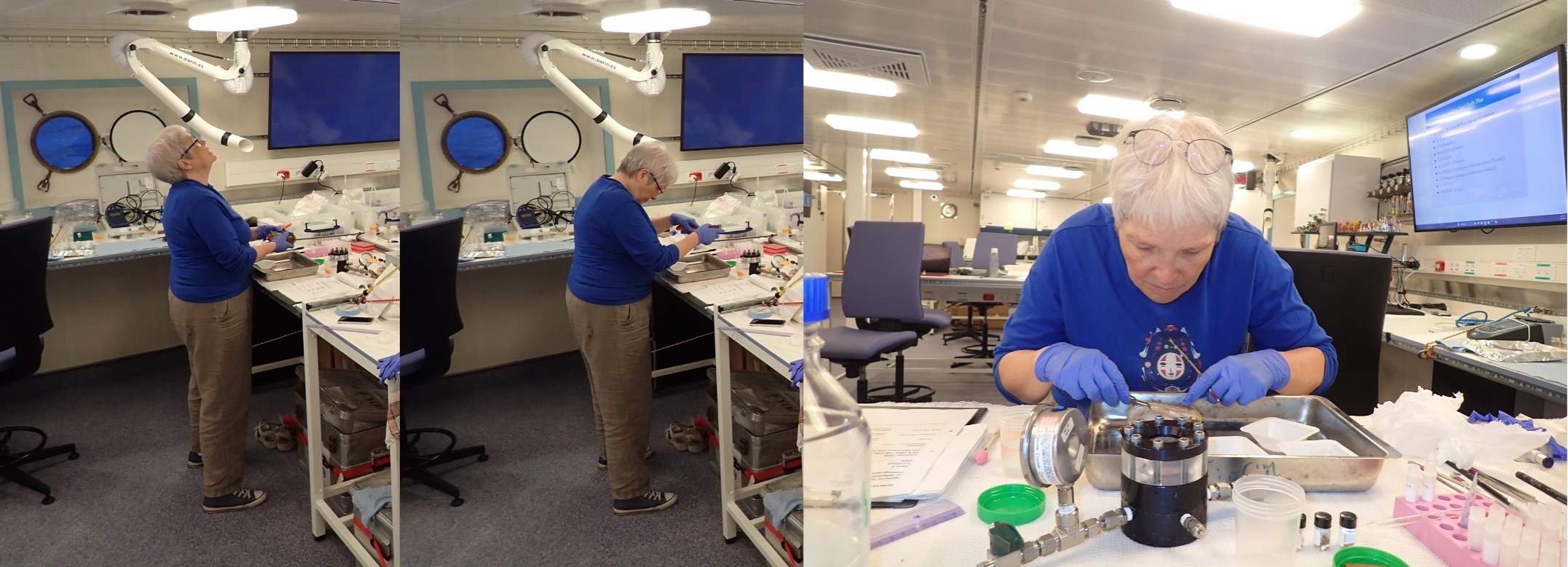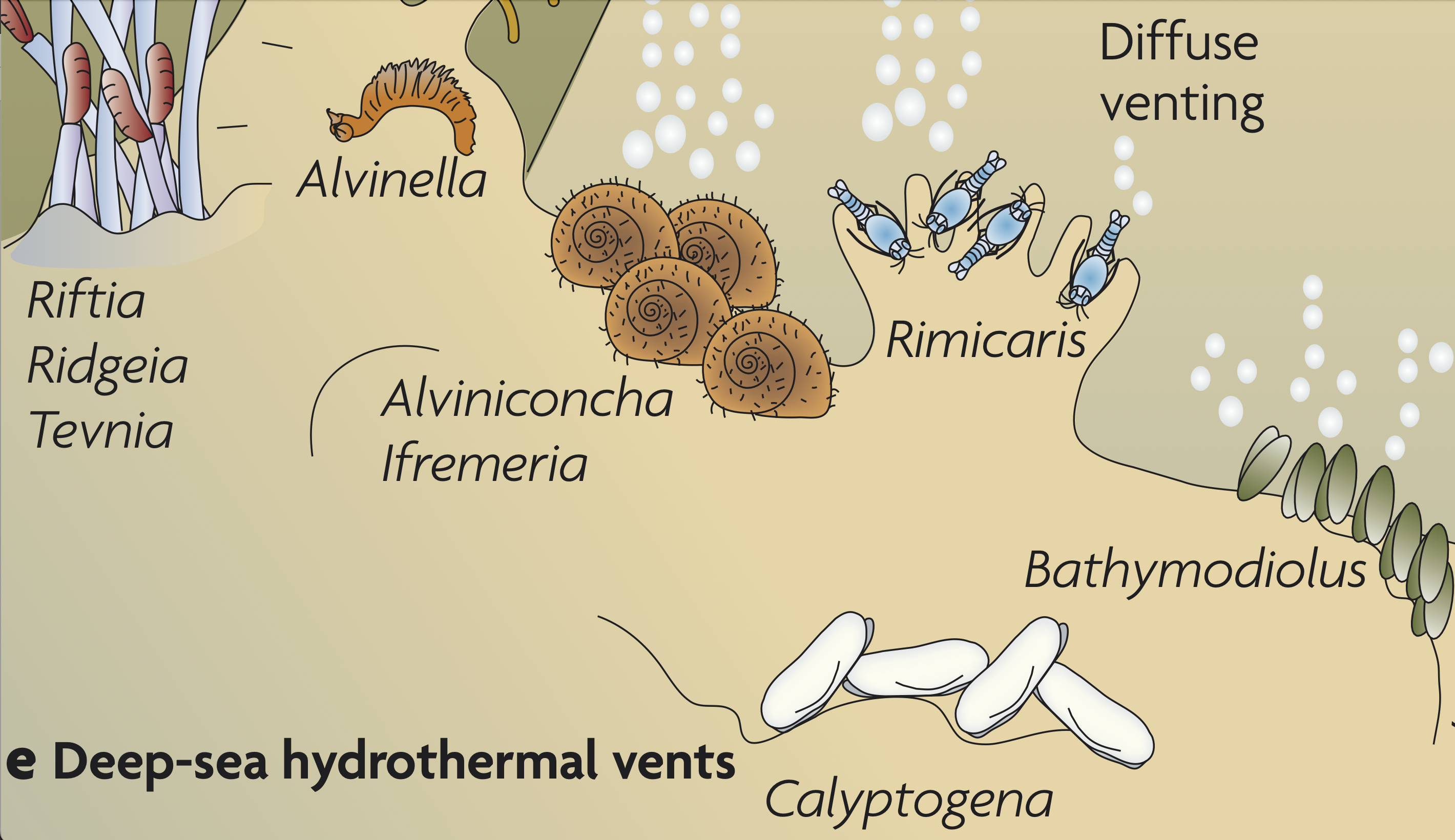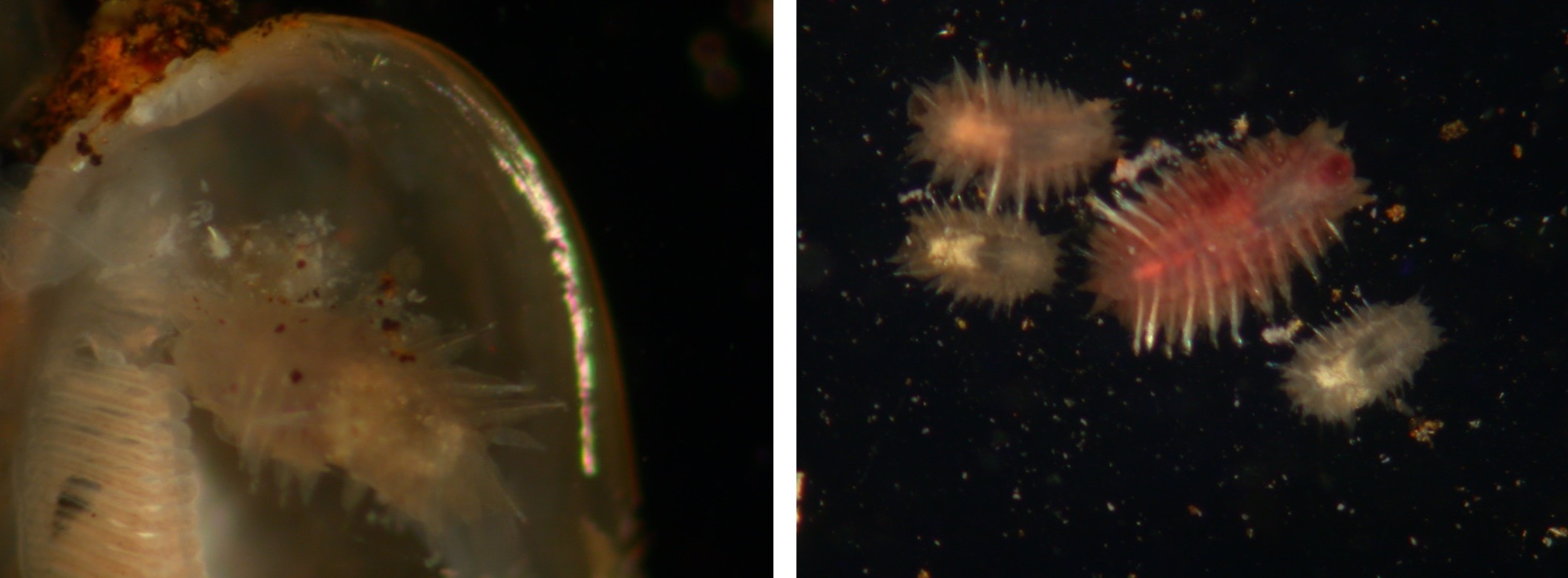In or out?
by Ingrid Kolar
I'm Ingrid and my task on board is to make experiments with mussels named Bathymodiolus thermophilus.

Ingrid Kolar unveiled. Attribution: Salvador Espada (CC-BY-NC-SA 4.0)
As you already read from Teresa, the giant tubeworm Riftia lives in symbioses with a bacterium. But Rifta is not the not the only animal at the hydrothermal vents with a symbiotic life style.

Figure extract from Dubilier et al. 2008, doi:10.1038/nrmicro1992
Bathymodiolus has also bacterial symbionts which are found in specialized cells called bacteriocytes which are in the tissue of the gills. It is a good place, the gills are well perfused with all the gases and everything the sulfur oxidizing symbiont needs for chemosynthesis. No cell is completely tight, so Bathymodiolus not only nourishes on the leaking organic liquids of the bacteria, but also digest them.
Endoriftia is well characterized and was found free living and in biofilms in the environment of the hydrothermal vents and we know that it can escape from the host´s tissue, after the host´s death - we don´t know if the bacterial symbiont of the mussel can do this also. Are the symbionts trapped and doomed to die with the host?
That´s where I come in.
Lab tension. Attribution: Salvador Espada (CC-BY-NC-SA 4.0)
I cut a bit of the mussel's gill tissue and put it in a little capsule with tiny pores, just 30µm in diameter, and then in a high-pressure vessel.
I fill it with bacterial free cold seawater -as we want to find the mussel´s bacteria and not other-, apply pressure between 210 and 220 bar in the vessel, keep it cool in the fridge and voilá- everything is ready for the symbiont to escape the host and find a new home. I do this in different time ranges of 12h, 2d and 5 d, because we don´t know how long it takes the bacteria to escape and settle. Additionally, I make 2 controls for which I kill all the cells in the gill tissue with either liquid nitrogen or alcohol.
After the incubation I take the tissue and the cover slips out and preserve them for further analysis in Vienna or Bremen.
Let´s see what we will find out!
P.S.
The chemoautotrophic bacteria are not the only symbionts in the mussel. There can be another, which you can see with your eyes. It is a beautiful, bright red scaleworm, the polychaete Branchipolynoe symmitilida.
Lodger. Attribution: Ingrid Kolar (CC-BY-NC-SA 4.0)
This symbiosis is a cleptobiosis, (Greek: kleptein=to steal), because the worm steals food which the mussel gained through filtration. Looking at the radioisotopes of both species and it was found out that were quite similar. This symbiosis is obligatory for the worm, the mussel doesn't need this lodger.
Monika found little Bathymodiolus which already bore a little worm. It seems that they grew up together.

(Left) Baby scale worm next to gill in tiny mussel. (Right) Differently sized scale worms collected form differently sized mussels. Attribution: Monika Bright (CC-BY-SA-NC 4.0)
